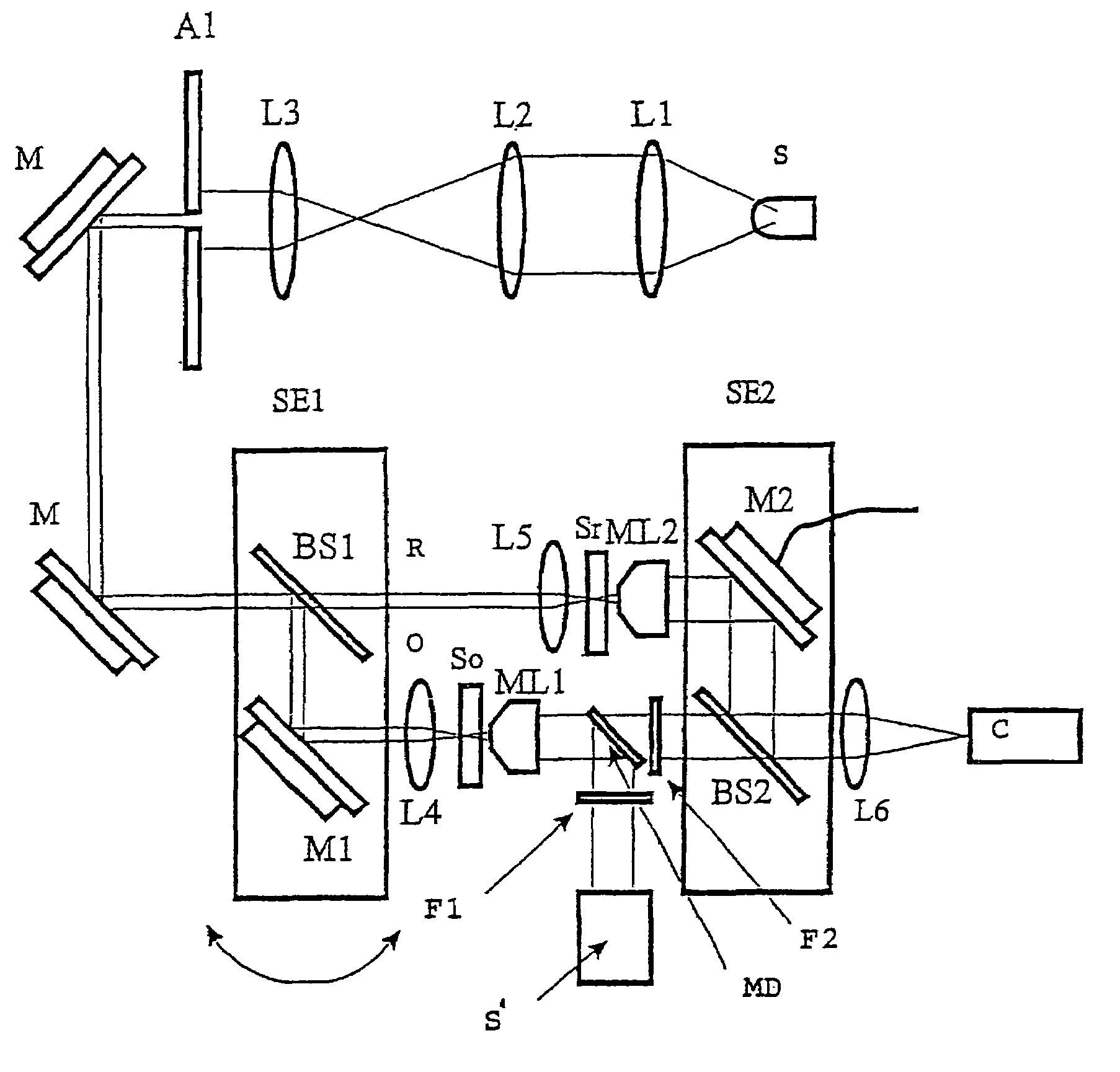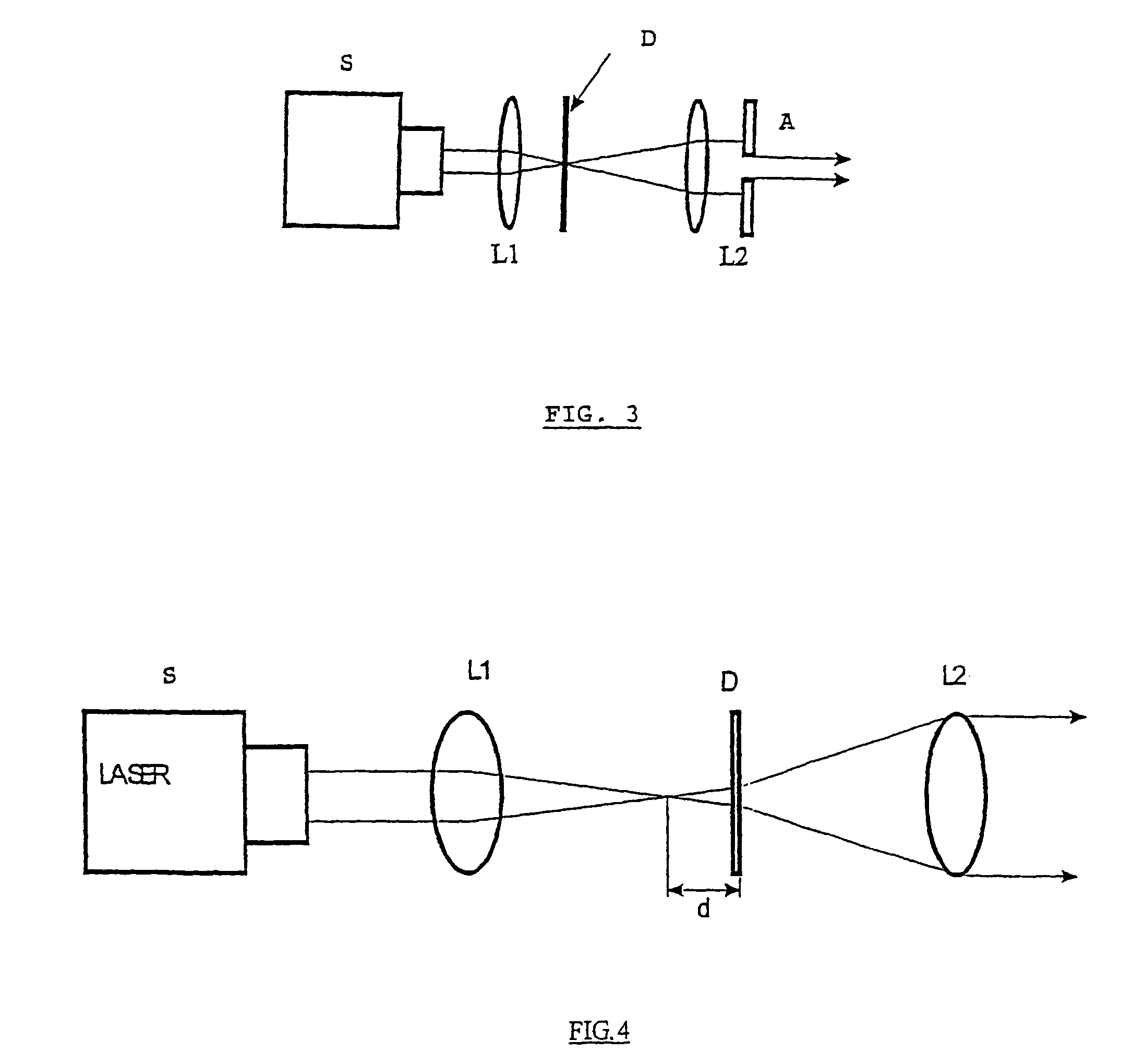Method and device for obtaining a sample with three-dimensional microscopy
a three-dimensional microscopy and sample technology, applied in the direction of fluorescence/phosphorescence, optical radiation measurement, instruments, etc., can solve the problems of preventing good acquisition of image, difficult to interpret images, and difficult to conventional fluorescence microscopy
- Summary
- Abstract
- Description
- Claims
- Application Information
AI Technical Summary
Benefits of technology
Problems solved by technology
Method used
Image
Examples
Embodiment Construction
[0031]The following detailed description presents a description of certain specific embodiments of the present invention. However, the present invention may be embodied in a multitude of different ways as defined and covered by the claims. In this description, reference is made to the drawings wherein like parts are designated with like numerals throughout.
[0032]One embodiment of the present invention provides a method and an instrument that make it possible to obtain, by microscopy, three-dimensional images of a specimen, in particular a thick biological specimen, and to measure, in three dimensions, the fluorescence emitted thereby, and that do not have the drawbacks of the conventional microscopy techniques, including those of confocal microscopy.
[0033]In particular, another embodiment of the present invention provides a method and an instrument that make it possible both to obtain three-dimensional images of the specimen and of the fluorescence field of this specimen, that is to...
PUM
 Login to View More
Login to View More Abstract
Description
Claims
Application Information
 Login to View More
Login to View More - R&D
- Intellectual Property
- Life Sciences
- Materials
- Tech Scout
- Unparalleled Data Quality
- Higher Quality Content
- 60% Fewer Hallucinations
Browse by: Latest US Patents, China's latest patents, Technical Efficacy Thesaurus, Application Domain, Technology Topic, Popular Technical Reports.
© 2025 PatSnap. All rights reserved.Legal|Privacy policy|Modern Slavery Act Transparency Statement|Sitemap|About US| Contact US: help@patsnap.com



